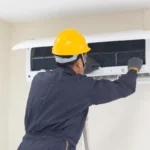Don’t have 20% saved for a down payment? You’re not alone. That’s why many buyers end up paying for something called PMI—short for private mortgage insurance.
PMI helps you qualify for a mortgage with a smaller down payment. It protects the lender in case you stop making payments, while giving you the opportunity to become a homeowner sooner and start building equity.
In this guide, we’ll cover what PMI is, how it works, how much it costs, when it can be removed, and how to avoid it altogether.
🔍 PMI Highlights:
- Required if your down payment is less than 20%
- Costs between 0.3% and 1.5% of your loan amount annually
- Can be paid monthly, upfront, or split
- Removable at 80% equity or automatically at 78% loan-to-value
What Is PMI?
PMI stands for Private Mortgage Insurance. It’s a type of insurance that you may be required to pay when you take out a conventional mortgage and put down less than 20%. PMI protects the lender—not the borrower—in case you stop making your mortgage payments.
While PMI adds to your monthly housing costs, it also allows you to buy a home with a smaller down payment and start building equity sooner.
How Private Mortgage Insurance Works
PMI is usually required on conventional loans when the buyer puts down less than 20%. Here’s how it typically works:
- Premiums are added to your monthly mortgage payment.
- You might also have to pay upfront premiums at closing.
- PMI stays in place until you reach 20% equity in your home.
There are four main ways PMI can be paid:
- Monthly premium: Added to your mortgage payment
- Upfront premium: Paid at closing
- Combination: A mix of upfront and monthly
- Lender-paid PMI (LPMI): The lender pays, but you get a higher interest rate
How Much Is PMI on a $300,000 Loan?
PMI rates typically range from 0.3% to 1.5% of your loan amount annually. Let’s say you’re borrowing $300,000 and your PMI rate is 0.5%:
0.005 x $300,000 = $1,500 per yearThat breaks down to about $125 per month added to your mortgage payment.
The exact rate depends on:
- Your credit score
- Loan-to-value (LTV) ratio
- Loan type and term
Is It Better to Put 20% Down or Pay PMI?
In general, it’s financially better to put 20% down if you can. This avoids PMI and reduces the total cost of the loan. However, that’s not always realistic or necessary.
Pros of putting 20% down:
- Avoid PMI altogether
- Lower monthly payments
- Better loan terms and interest rates
But if you can’t:
- Paying PMI can still be worth it to buy sooner and begin building equity
- With rising home prices, waiting to save 20% might cost you more long-term
It depends on your financial goals, timeline, and market conditions.
How Can I Avoid Paying PMI?
Here are common strategies for avoiding PMI:
- Put down at least 20% on a conventional loan.
- Consider VA or USDA loans—they don’t require PMI (for eligible borrowers).
- Use an 80-10-10 piggyback loan:
- 80% first mortgage
- 10% second mortgage
- 10% down payment
- Explore Lender-Paid Mortgage Insurance (LPMI):
- No monthly premium, but you’ll likely pay a higher interest rate.
When Can PMI Be Canceled?
PMI is not permanent. Here’s when you can remove it:
- Automatically canceled when your LTV hits 78% (based on original purchase price)
- Request cancellation once you reach 80% equity (with a good payment history)
- Refinance your mortgage if your home value has increased significantly
FHA loans have different rules—MIP may last for the life of the loan, depending on your down payment.
Is PMI Tax-Deductible?
As of recent tax years, PMI is not tax-deductible for most homeowners. However, this has changed frequently in the past, with Congress periodically renewing or ending deductions for mortgage insurance premiums.
If you’re using the property as a rental or investment, you may be able to deduct PMI as a business expense. Always consult a tax advisor to understand your specific eligibility based on the current tax code.
PMI vs. Other Mortgage Insurance Fees by Loan Type
| Loan Type | Down Payment Required | Type of Insurance | When It’s Required | Can It Be Canceled? |
|---|---|---|---|---|
| Conventional | Less than 20% | PMI (Private Mortgage Insurance) | At loan origination if down payment < 20% | Yes, at 80% equity or 78% LTV |
| FHA | As low as 3.5% | MIP (Mortgage Insurance Premium) | Always required | Sometimes, after 11 years |
| VA | 0% | Funding Fee | One-time upfront fee only | N/A – no ongoing insurance |
| USDA | 0% | Guarantee Fee | Upfront and annual fees | No, stays for the life of the loan |
Paying PMI Upfront: What You Need to Know
In some cases, lenders give you the option to pay your Private Mortgage Insurance (PMI) as a one-time upfront premium instead of monthly installments. This is known as Single-Premium Mortgage Insurance (SPMI) or upfront PMI.
What Is an Upfront PMI Premium?
Upfront PMI is a single payment made at closing that covers the mortgage insurance cost for the required duration. Rather than increasing your monthly mortgage payment, you prepay the full premium in advance.
How Much Does Upfront PMI Cost?
Upfront PMI usually ranges from 1.0% to 2.25% of your total loan amount. The exact cost depends on:
- Loan size
- Credit score
- Down payment amount
- Loan type and term
Example: For a $300,000 loan at 1.5% upfront PMI rate:
$300,000 x 0.015 = $4,500 upfront premiumPros of Upfront PMI
- Lower monthly payment since PMI isn’t included in the mortgage payment
- May save money long-term, especially if you stay in the home for several years
- No need to monitor for removal once equity reaches 20%
Cons of Upfront PMI
- Higher cash requirement at closing
- No refund if you sell or refinance early
- Lack of flexibility—you can’t switch to monthly payments later
Can You Finance the Upfront Premium?
Some lenders allow you to roll the upfront PMI cost into the loan. This reduces the upfront cost, but increases your loan amount and total interest paid over time.
Is Upfront PMI Right for You?
Consider upfront PMI if:
- You have extra cash at closing
- You want a lower monthly payment
- You plan to stay in the home long term
Before you close on a mortgage, don’t forget an important step: getting a home inspection. A professional home inspection can reveal potential issues with the property and help you avoid costly surprises—especially when you’re already managing added expenses like PMI.
Final Thoughts
Private mortgage insurance plays a valuable role in helping people become homeowners sooner. While it adds to the cost of a mortgage, it also provides flexibility for those who can’t put down 20% upfront. Knowing how PMI works—and how to avoid or cancel it—can help you make smarter home financing decisions.

